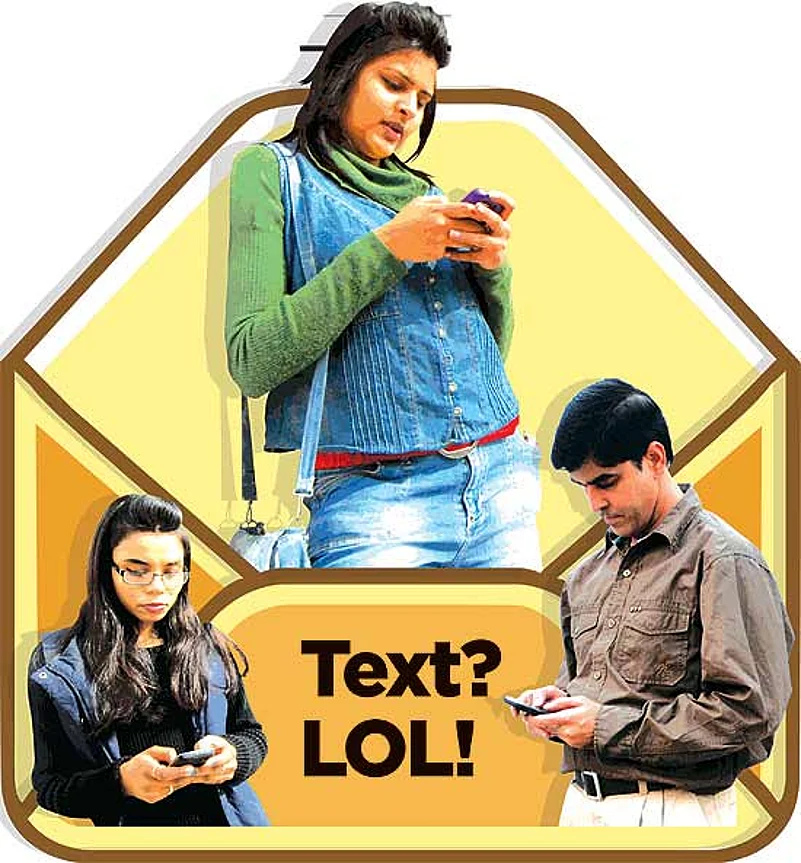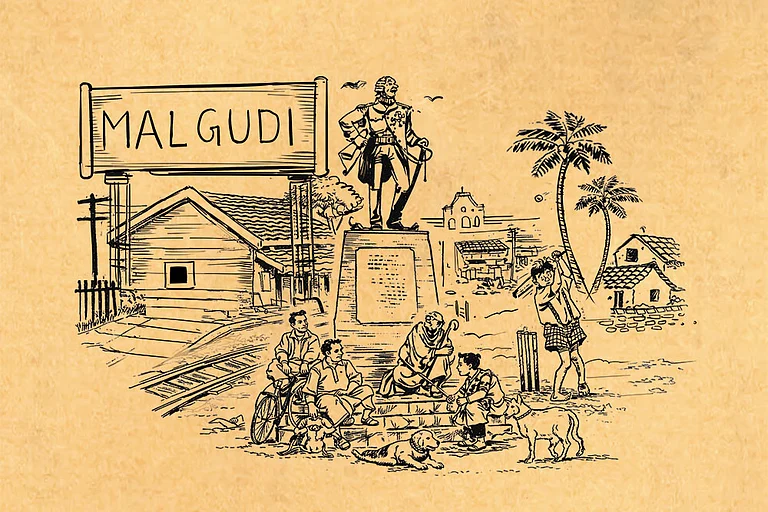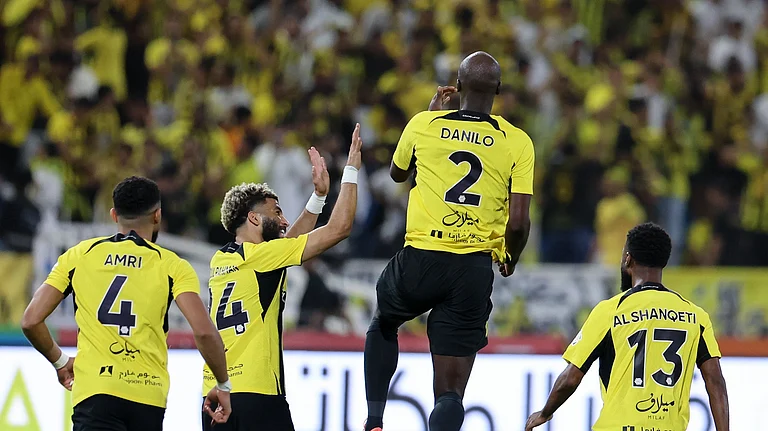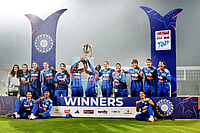Why SMS Is On The Decline
- Urban youth, executives moving away from SMS to other applications like BBM, social networking and Instant Messaging
- Mobile operators saw between a 5 and 15 per cent fall in holiday SMSes
- Person-to-person SMS growth fell from 40 per cent in 2010 to 30 per cent in 2011
- Enterprise SMS—which makes up 30 per cent of the overall market—is poised for growth
- This puts pressure on SMS prices, with operators offering lower rates
***
Is the mighty SMS on the decline? Something is definitely brewing, says Prabhat Kumar, VP, ACL Wireless, a mobile value-added services developer. Every New Year’s Day, he usually gets 200-300 HNY (Happy New Year) messages on his mobile phone. This year, he got just about 50. All the wishes came via other convenient and cheaper communication applications. Sounds familiar? In fact, mobile operators have seen between five and 15 per cent falls in festive/holiday SMSing—and this is a global trend also reported in mature markets like Finland and Hong Kong.
Make no mistake: SMSes are still being sent out at a healthy clip in India. But the growth rates have begun to flag, signalling the beginnings of a downward trend. “Although SMS traffic appears to be stable at the moment, it is a wake-up call,” says Jaideep Ghosh, a partner with KPMG. “There is a clear shifting trend towards other technologies and a declining trend for SMS.” Operators may not admit it openly, but they are concerned about the impact on a cash cow. In the last three quarters, normal SMS flow has not increased, but remained around 45 per person.
The reason, quite simply, is that urban audiences have so many other ways to communicate: Instant Messaging (IM) services like Google Talk and Yahoo Chat, social networking websites like Facebook and Twitter, peer-to-peer messaging applications like WhatsApp and company specific messaging services like BlackBerry Messenger (BBM). Unlike SMS, which charges per message, the web-based challengers are free—once a person signs for a data plan. It helps that these plans are available at low incremental cost or offer unlimited usage for a low, fixed monthly charge.
What’s pushed the use of web-based alternatives to SMS is the growing penetration (albeit from a nascent level) of smartphones. Even 18 months ago, the average smartphone cost about Rs 10,000 to 15,000. Today, they are available for around Rs 5,000. Some service providers, like MTS, have started bundling Android-based smartphones at extremely low prices. Leading service providers offer Internet plans for as cheap as Rs 98 a month with 2GB worth of downloads.
Mobile operators are justifiably worried. Few of the new subscribers added every month are SMS savvy. A majority are in Tier-2 and Tier-3 cities and use basic phones, good only for voice and SMS. Most don’t use English messaging at all. This is evident from the fact that the average revenue per user (ARPU) for new operators is abysmally low, at around Rs 90, while that of older players has stayed around Rs 200. “There’s a huge scope for reduction of SMS prices,” explains Sanjay Agarwal, CEO, Unicel Technologies. “The cost they (mobile operators) incur on sending an SMS is a fraction of what they charge customers.”
A big factor in the shift from SMS has been the Telecom Regulatory Authority of India (TRAI’s) new rules limiting the number of messages that can be sent from a single number. In September 2011, TRAI limited the number of messages from a single number to 100 per day and later raised this to 200. The move, aimed at weeding out unwanted and promotional messages, has taken its toll on SMS—spam-hit Indians looked for other applications for messaging.
Blogger and Net activist Nikhil Pahwa explains, “People figured out alternatives to SMS, applications that offered free services over a fixed data cost plan. Here, there are no daily limits and users are far more comfortable with fixed cost for data.” According to industry data, SMS traffic fell by 40-50 per cent in October 2011 (compared to the previous month). Matters improved once the daily limit was raised to 200, but traffic in November-December 2011 remained 25 per cent below September levels.
Companies, however, say that all this is business as usual and SMS traffic has been unaffected. They feel that, since SMS is platform-independent and can be sent and delivered using any phone, it will continue to be the default service of all mobile phone users. Indeed, online services like IM and social networking can be accessed only on smartphones, while services like BBM and iMessage can be used only on BlackBerry and Apple phones. BlackBerry has just about one million users in India; iPhone numbers will be smaller.
Says Tapan Tripathy, director (marketing) for mobile operator MTS: “Person-to-person messaging may have taken a hit because of new applications, but SMS is still considered to be one of the simplest modes of communication. It is cheap and personal, which is not the case with social networking.”
Most observers are wary of knocking the mighty SMS, but do point to the obvious trend. “SMS is still the universal application and its ubiquity cannot be undermined. But migration will happen mostly because of the cost factor and the convenience of finding contacts,” says Girish Nair, CEO, digital marketing firm Netcore. Others say that there will be takers on both sides as people find their own convenience. Says Chirag Jain, VP and co-founder, Webaroo, which develops consumer mobile products: “This is not an either/or situation. It is one of happy co-existence. Even if one uses a BBM, he will not give up SMS altogether.”
There is also enterprise messaging. With many essential services going online, banks, airlines and other services are using SMS as the default mode to communicate with customers, and this has been growing exponentially at around 120 per cent in the last two years. Says ACL Wireless’s Kumar: “In the long term, SMS won’t be used for general communication. From a consumer-facing service, it will become enterprise-facing as more companies and services will use this to connect with consumers.”
With new technologies like 3G and 4G/LTE coming in, it is likely that data rates on older technologies will get even cheaper and push internet on mobile further. This could hurt SMS’s future and force operators to take another look at what they charge people for text messaging. At present, operators incur a fraction of what they charge for SMS. Companies are already reacting with attractive SMS plans (like 100 SMSes for just Rs 9). Consumers can expect cheaper SMS rates—but as always, they will have to navigate the fine print to find them.






















